Best gravel bikes – drop bar off-roaders for racing and exploring
Our round-up of the best gravel bikes from fast off-road racers to capable adventure machines
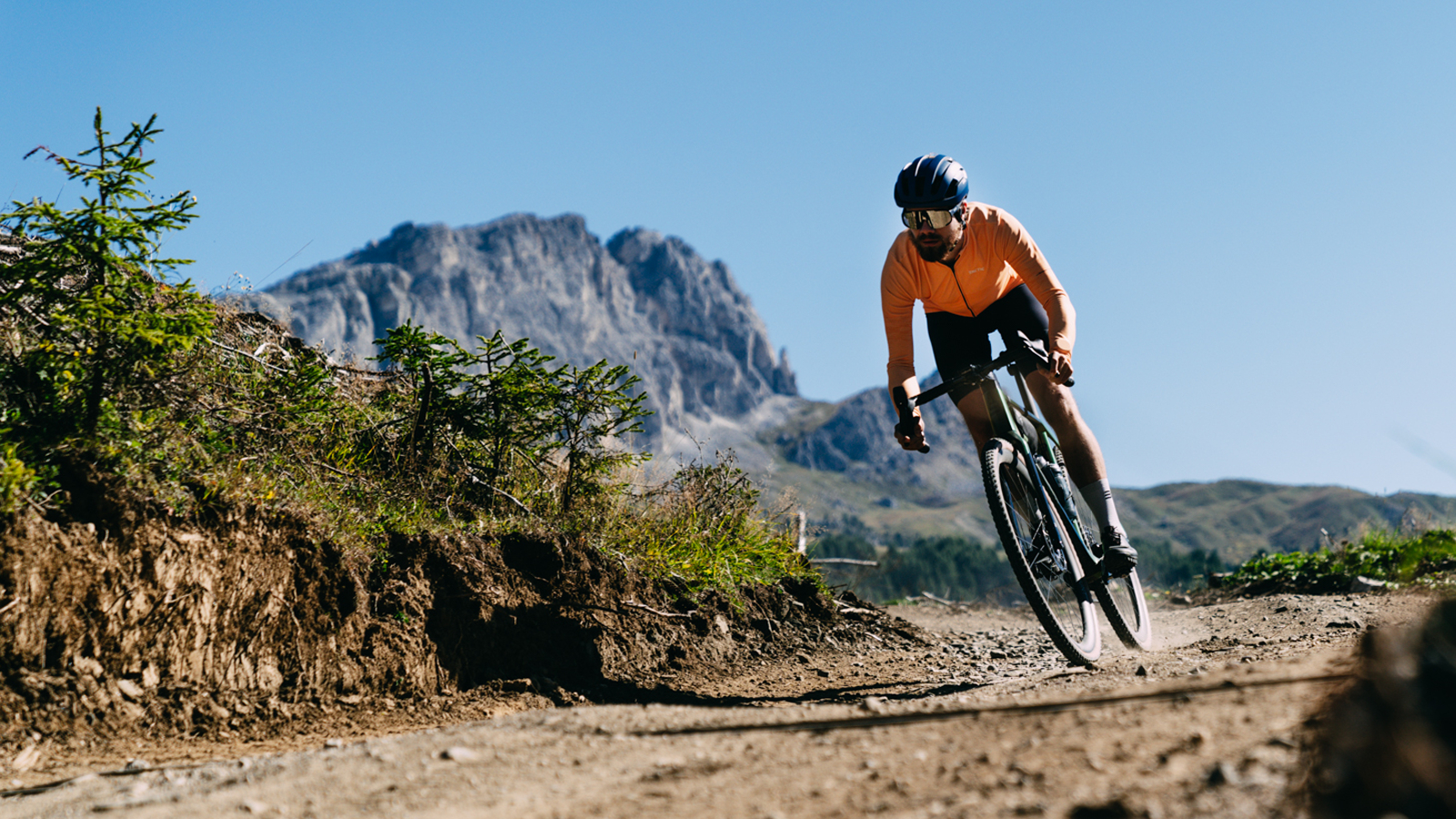
The best gravel bikes have come a long way in a short time. We have seen a lot of innovation in the gravel scene and the tech still doesn’t seem to be slowing down. Brands continue to seek ways to make the best gravel bikes faster, comfier, and more capable of bigger off-road adventures. As a result, gravel as a discipline is forever being redefined, with ever-smaller niches being created, tailoring bikes to specific terrains and riding desires.
It wasn't long ago that gravel bikes were no more than endurance road bikes or cyclo-cross bikes that had a bit of extra tire clearance. The best gravel bikes have now truly opened up a new genre that fills the gap between the best lightweight mountain bikes and road bikes. Companies are leaving no stone unturned and are experimenting with specific gravel bike geometry, components, and even gravel bike suspension to try and create the best gravel bike.
Our team of experts have tested the best gravel bikes on a range of roads and tracks to assemble this in-depth buying guide. Our technical editor Guy Kesteven has been riding gravel bikes since their modern onset so knows what works and what doesn't.
While some of the bikes on this list are priced at the higher end, there are still options for riders looking for cheap gravel bikes. Even the best gravel bikes under $1,000 are more than capable of some off-road adventures. There is also a load of gravel-specific products on the market now, like the best gravel shoes or best gravel bike pedals, which we have written guides on as well.
Keep reading for our pick of the best gravel bikes, and you can also skip to the end of the article for our tips on how to choose the best bike for you.
The best gravel bikes
Why trust BikePerfect

Specifications
Reasons to buy
Reasons to avoid
Guy Kesteven was quite taken by the Mason Exposure Ekar thanks to its impeccably hand-built, steel, Italian gravel/adventure frame and deliciously lively yet smooth ride vibe.
The frame is made from a custom-developed blend of progressive butted Dedacciai Zero and Zero Uno tubing with subtle ovalization and 'DForm' shaping in key areas. Large 650B x 58mm or 700c x 50mm tire clearance paired with loads of mounting points for bottles, bags, and accessories means the Exposure can be set up to handle any sort of bikepacking trip.
Our test bike came equipped with Campagnolo Ekar and a Hunt Mason X Hunt 650B AdventureSport Disc wheelset with chunky 2.35in Vittoria Mezcal XC MTB tires. However, Mason gives you the option to swap the wheelset at the point of purchase and even add a second wheelset if you want to really explore the versatility of the frame.
Guy liked Mason's gravel adventure bike so much he awarded the Exposure bike full marks in his review, describing it as 'masterful' and saying that, "it doesn’t get any more ‘right’ than the beautifully Italian hand-built and impeccable finished Mason/Cicli Barco frameset either which combines charismatic charm and responsive performance with all the practical fixtures you could want."
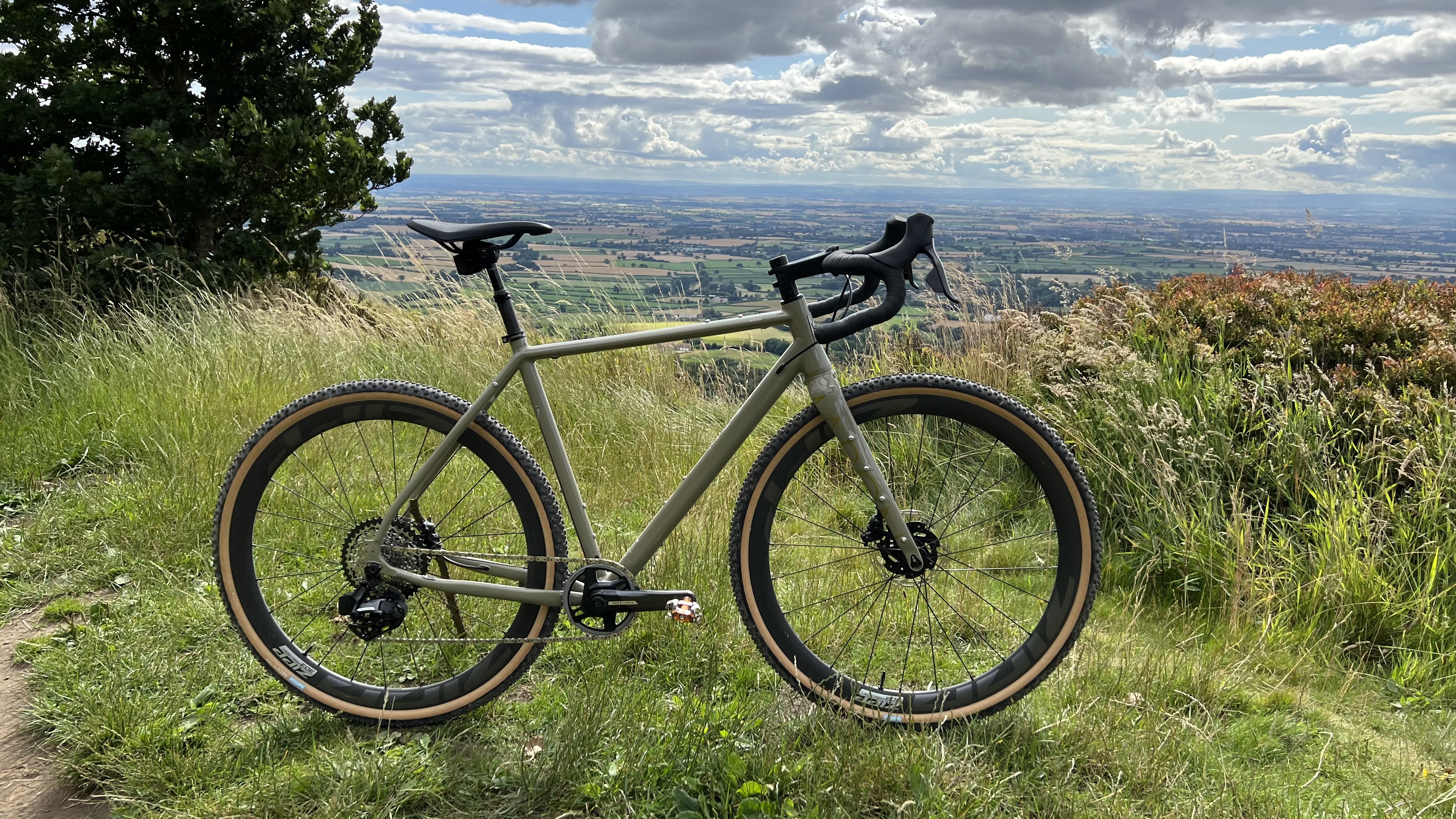
Specifications
Reasons to buy
Reasons to avoid
The latest 3.0 version of Mason's Bokeh brings it bang up to date with cleaner aesthetics and more cargo options. The mainframe core with its custom-formed Dedacciai aluminum tubing hasn’t changed significantly. The rear dropouts are now blended in subtly though and the Ø56mm ThruBB shell lets brake hoses run internally under the crank axle. Seat tubes swell from 31.6 to 34.9mm on the largest two frame sizes to increase stiffness too.
Mason’s super neat ‘MultiPort’ inserts allow you to open or seal the frame holes depending what shifting setup you’re running and the Bokeh still has apertures for Di2 or conventional front mechs. Dynamo light routing moves up to the top tube for neater lines though and you get bolted mounts for a ‘Fuel Tank’ bag too. Rear rack and fender mounts include a seat tube securing point and there are two conventional bottle mounts inside the main triangle and another under the belly.
Front and rear axles sit in replaceable threaded mounts and Mason’s pull out SwitchLever has a built in 6mm hex head for undoing the rear axle too. Other neat fork details include a molded carbon seat for the headset bearing which strengthens the fork, guarantees bearing alignment and minimizes the frame to fork gap.
In our tests, Guy Kesteven found the Bokeh V3 feels as “instantly right” as ever. Resisting the trend to go slacker with steering or fatter with tires keeps the bright eyed vitality and agility that’s always made it a joy to race and chase along twisty singletrack on. Lower front ends encourage the hunt as you hunker down out of the wind or naturally load the front tire more into turns. Guy found the faster handling suits the frame feel perfectly too. While it’s remarkably forgiving and floated for an alloy bike, there’s none of the slight delay or softness through bars or pedals that you get with steel, or the muted ‘meh’ feel that you get with a lot of carbon.
Guy gave the Mason Bokeh 3.0 five stars in his review, finding that, “it consistently delighted me with what it skimmed, skipped and floated through with ease compared to the blunter, thumping awkwardness or clattering hysteria of a lot of gravel bikes.”
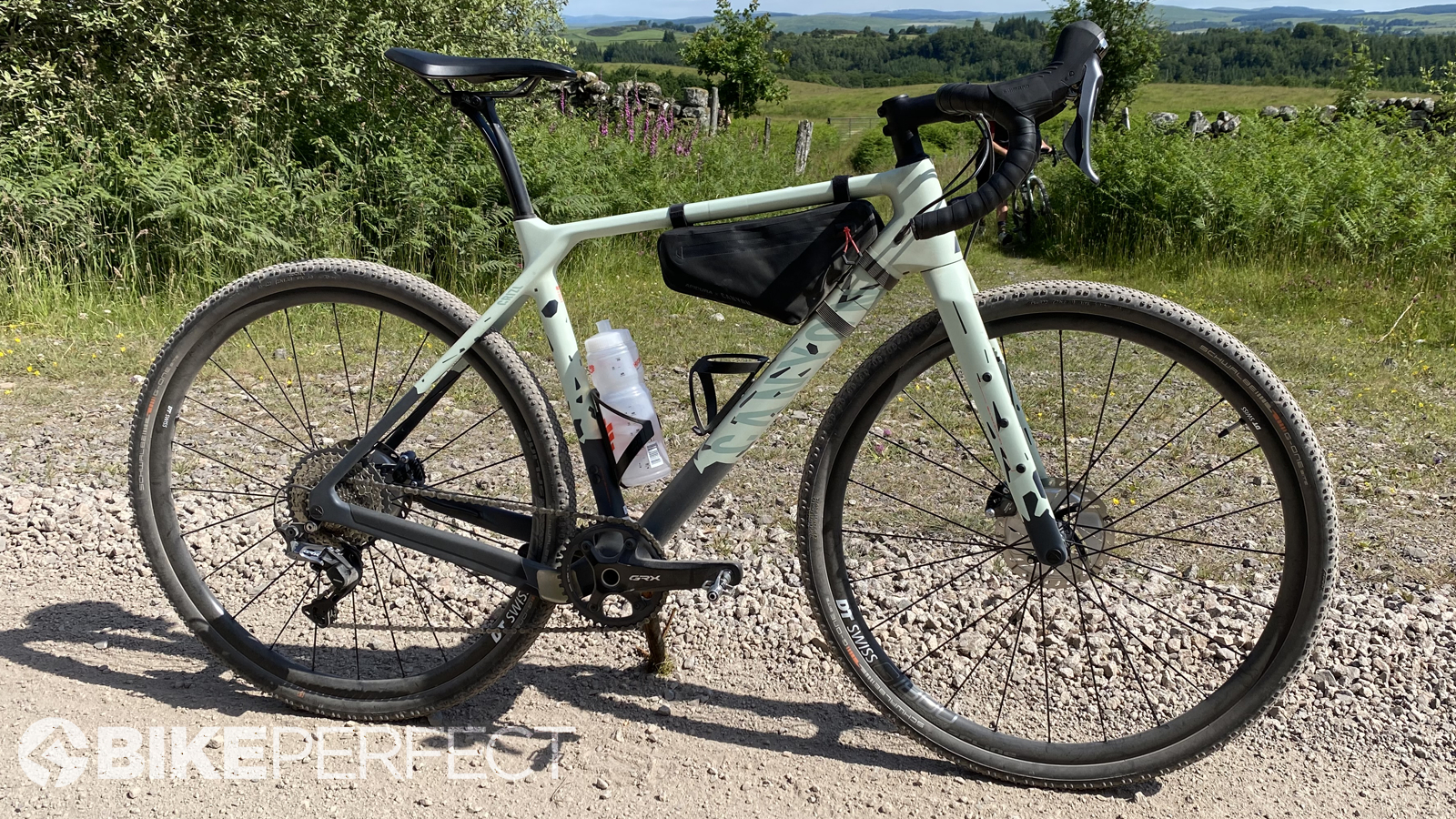
Specifications
Reasons to buy
Reasons to avoid
Canyon originally released its Grail in 2018 with a radical and divisive handlebar design. That frame is still the brand's gravel race bike, but the newer Grizl offers more aggro and adventure-friendly geometry. It can also be raced on the highest level as demonstrated by riders like Peter Stetina at Unbound.
The Grizl was designed to delve deeper into the woods than more race-specific gravel bikes. We found the combination of the massive 50mm tire clearance and slammed bottom bracket gives the Grizl a very planted and stable ride on rough terrain and high speed descents. Head angles vary from 70 to 72.75 degrees depending on size, but seat angles are fixed at 73.5 degrees. Smaller frame sizes roll on 650B wheels while the larger frame sizes use 700c.
There are two builds for at the CF SL 8 level. Both use Shimano GRX groupset and a DT Swiss wheelset and Schwalbe tires. The Grizl CF SL 8 is most similar to the bike we tested other than it now features a double. The equally priced Grizl CF SL 8 Suspension 1by, as you would suspect from the name, comes with a RockShox Rudy 30 suspension fork, an Iridium SP0058 dropper post, and 1x groupset.
When we tested the Canyon Grizl CF SL 8 we concluded that, "within meters of unboxing and setting off, it’s clear that Canyon has done a brilliant job with the frame and fork of the new Grizl. It’s lighter and punchier under power than a lot of race-styled bikes, yet calm as a grass-full cow even when you’re pushing into the MTB envelope."
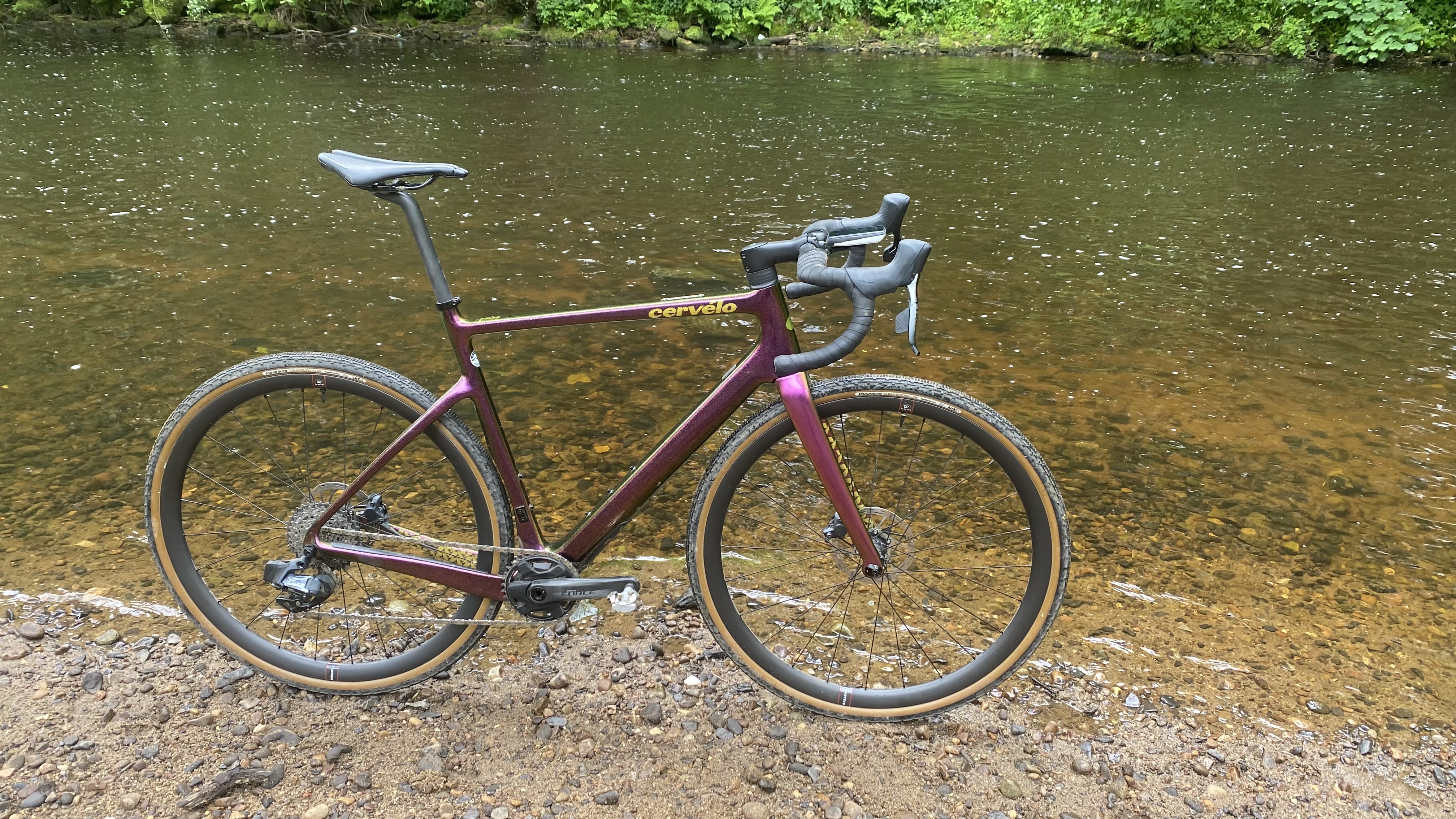
Specifications
Reasons to buy
Reasons to avoid
From the first pedal stroke it was clear to our testers that the Cervelo Aspero 5 was all about speed. Lossless power transfer, aerodynamic features, and sharp road inspired handling means this uncompromising speed machine only further encourages full-gas riding.
The Aspero frame shares the same mold and thus the same aerodynamic slipperiness as the regular Aspero, claiming an aerodynamic saving of 32g of drag. What differs with the Aspero 5 is that Cervelo has used a different carbon layup in order to shave 10 percent of weight for 990 gram frame weight. There's a flip-chip to run different wheel sizes and, as this is a race bike and not a bikepacking bike, minimal bosses for luggage.
In our Cervelo Aspire 5 review, the bike marked itself as an out and out race bike: "it’s got the power delivery for violent velocity gain and the aero tweaks to hold that gained speed noticeably better than most machines. The handling is equally aggressive, for juggling traction and being the gap exploiting predator in gravel race groups too."

Specifications
Reasons to buy
Reasons to avoid
While some gravel bikes are designed to be as fast as possible, others are more at home loaded up and exploring the unknown. Cotic's Escapade is very much aimed at the latter, with its slack geometry, massive tire clearance, and suspension fork compatibility.
You would be forgiven for thinking this was a drop bar mountain bike as the Escapade really blurs the line between gravel and mountain bike. The huge 29x2.6in or 27.5 x 3.0in tire clearance means even the best MTB tires will fit and the 69-degree head angle is designed to work around a rigid fork but can also be substituted for a 100mm RockShox SID fork for serious adventures. As expected there are plenty of mounts too, including three-bolt everything cages, front and rear racks (high and low rider) as well as dynamo wire and dropper post routing.
If you're looking to cover smooth gravel quickly, this probably isn't the bike for you and its not pretending to be. During our testing, the Cotic Cascade's character was clear: "the Cascade is the bike equivalent of that mate who isn’t the fastest, fittest or fanciest but who never lets you down however heavy things get and always makes daft adventures or just the daily grind way more fun than you expect."
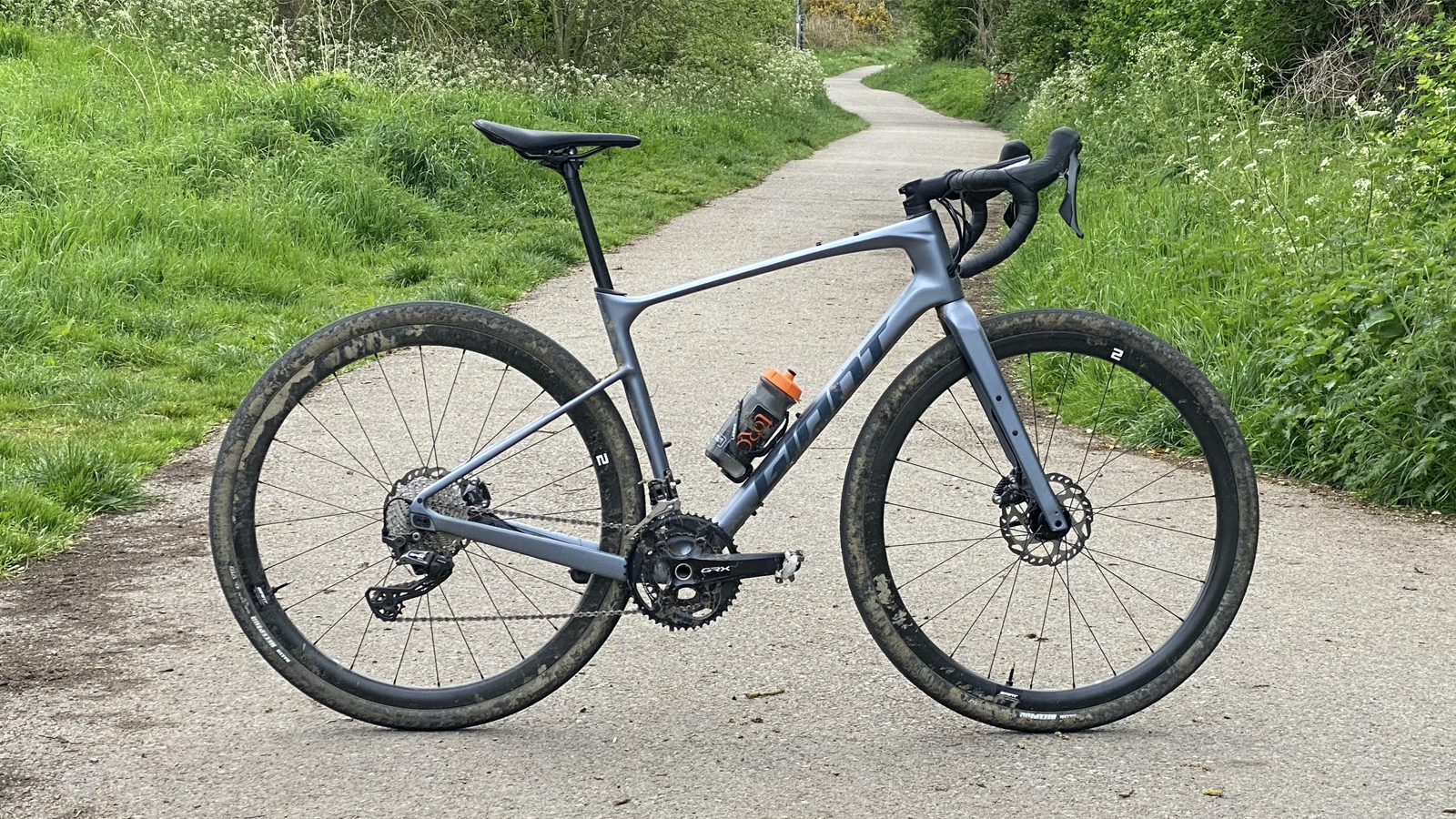
Specifications
Reasons to buy
Reasons to avoid
Giant's Revolt is a versatile gravel bike that is fast on both road and gravel surfaces and is loaded with features. The Revolt features plenty of mounting options for bags, a flip-chip to adjust chainstay length, and vibration absorbing D-Fuse handlebar and seatpost. While most brands are creating slacker, more stable gravel bikes, the Revolt is a little different. Giant has used a steeper head angle to compensate for the increased steering trail and stability of the bigger tires and a dropped bottom bracket to offset the increased ride height.
The big volume tires might dull the sensations of speed, but there is no denying that the Revolt is a fast bike as it smashed some of our PRs during testing despite its subdued personality. The light wheels and smooth 40mm tires are definitely an advantage here unless the terrain starts getting too loose or rough. In which case you will want to leverage the massive 53mm clearance available on the Revolt to fit some chunkier tires.
Compromise can sometimes limit overall capability but when we reviewed the Giant Revolt Advanced 0, we found it was a more versatile gravel bike than most: "gravel bikes are inevitably a compromise between road and off-road performance, and the Revolt spans an even wider spectrum of uses than most."
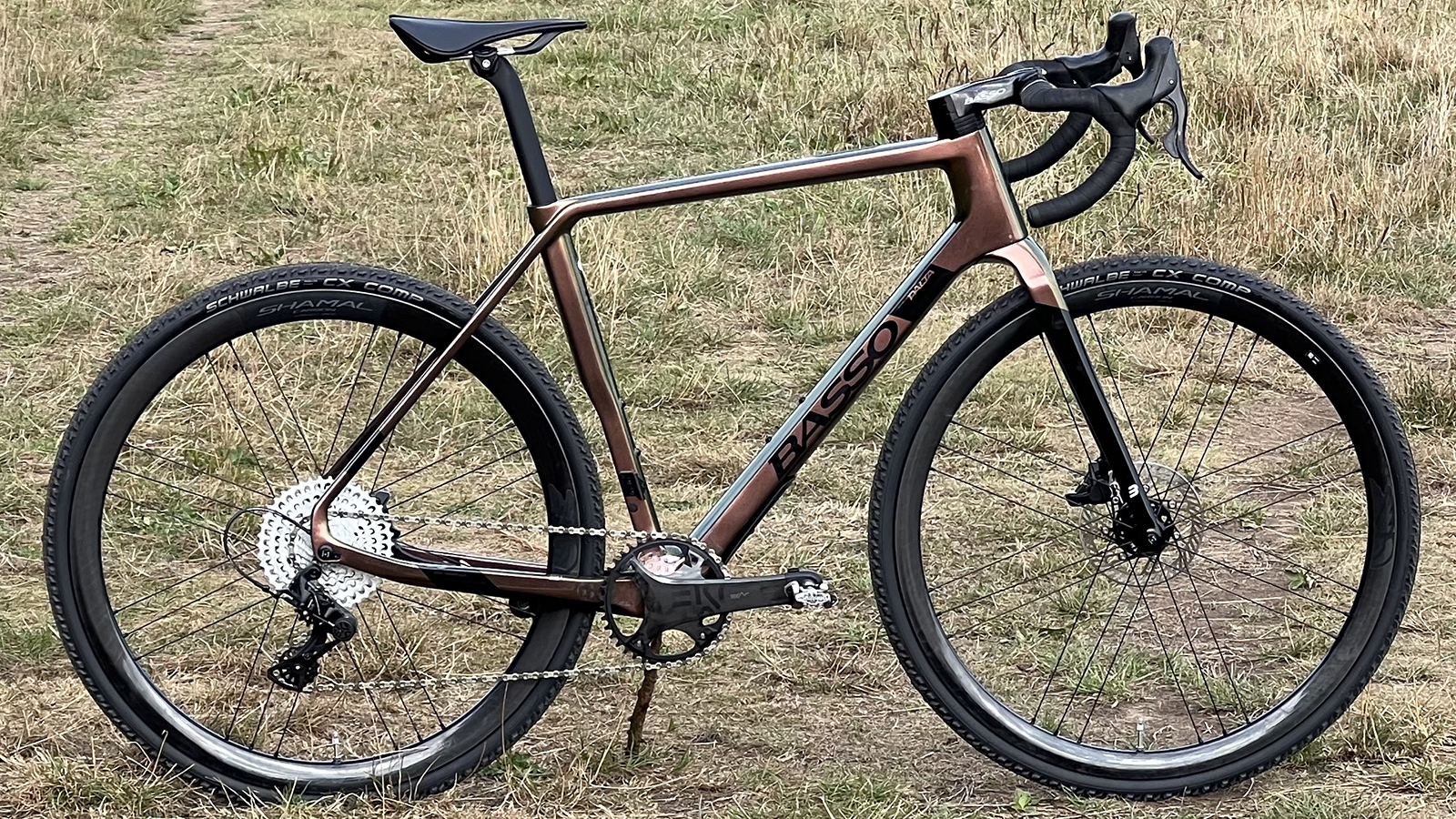
Specifications
Reasons to buy
Reasons to avoid
While gravel bike trends are seeking bigger tires and extra compliance, there will always be riders on the other end of the spectrum that seek stiff and aggressive gravel bikes for racing gravel events like Unbound Gravel. The Basso Palta II is one of the latter bikes.
The Palta II’s road inspirations are obvious with its sleek racy lines and aggressive geometry; with this comes its ride qualities. As soon as we rode the Palta II it was clear the bike seeks to cover all terrain types at a fast pace, whether that's open gravel roads, technical tracks, or tarmac. Usually, racey bikes will sacrifice ride quality for speed, however, the Palta II still has a surprisingly comfortable ride quality.
The updated Palta keeps much of its race-informed geometry but tire clearance has been increased to 45mm. The frame is nicely finished with neat internal routing, vibration dampening seatpost, and three bottle cage mounts to allow plenty of water or some storage for essential items. Basso offers the Palta in three colorways as well as multiple build kits including Shimano GRX, SRAM Rival XPLR, Campagnolo Ekar, or as a frameset only.
If you are looking for a bike to cover long distances at speed, we think the Basso Palta II is an excellent choice as Guy found out when he reviewed the bike: "Basso’s Palta gives a great balance of easy speed with surprising smoothness that makes it a pleasure to ride on road and off. It’s got all the tire space you’re likely to need for gravel racing and it looks gorgeous as well."
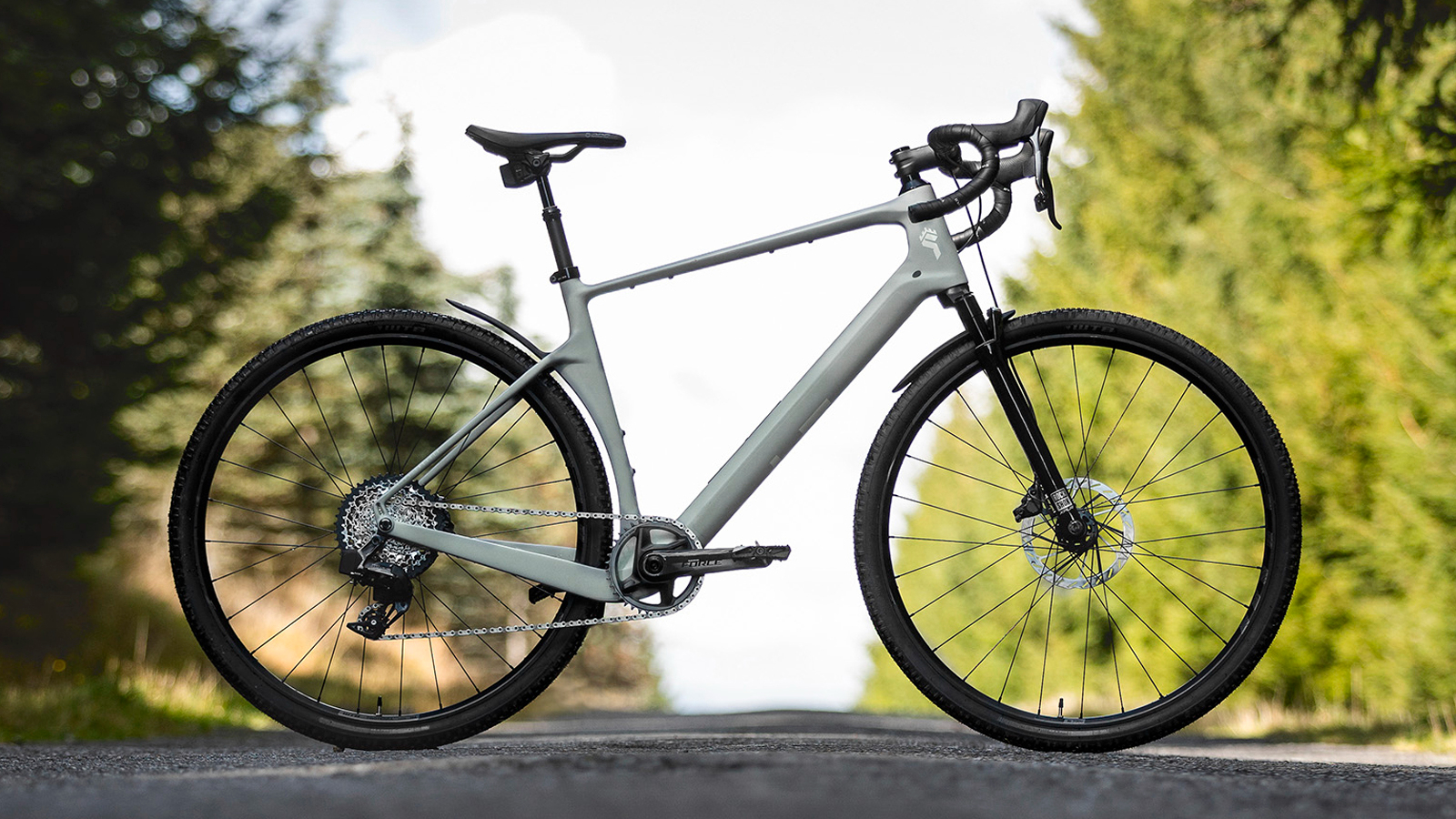
Specifications
Reasons to buy
Reasons to avoid
YT was once a mountain bike exclusive brand, however, YT saw an opportunity to apply their MTB design expertise to the gravel bike. The result is the Szepter, a trail-orientated gravel bike with a slack head angle, long wheelbase, and comes equipped with a suspension fork and dropper post.
While we have only had a chance to ride the Szepter over a couple of days, we found it to be a blast on undulating singletrack. The suspension fork and dropper really help too, maintaining control and momentum.
The tall stack height, weight, and small chainring may not lend itself to riding at pace, but the Szepter is going to be a lot of fun for a MTBer looking to inject some variety into their riding. Read more, in our YT Szepter Core 4 first ride review.
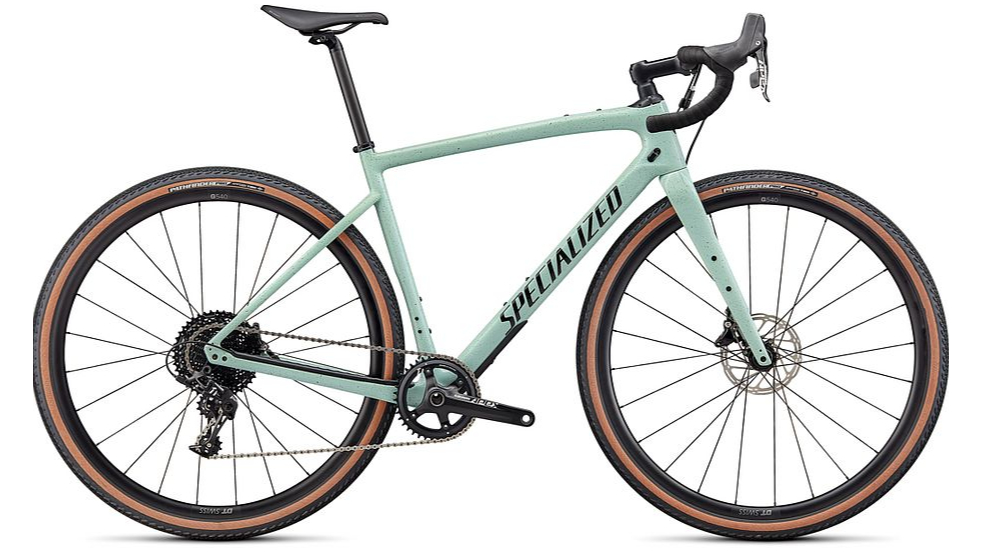
Specialized Diverge Sport Carbon
Specifications
Reasons to buy
Reasons to avoid
The Diverge Sport Carbon sits as the entry into Specialized’s carbon-framed adventure line. With the Diverge comes the Specialized Future Shock 1.5 system; the ethos is that smooth is fast. By using an adjustable hydraulic damper mounted in the head tube, the Diverge has 20mm of travel to smooth out trail and road vibrations. This is combined with the 700c x 47mm, 650b x 53mm tire clearance to offer even more compliance.
Specialized has finished the bike thoroughly with adventure-ready mounts for three bottle cages, racks and fenders, and has borrowed the SWAT frame storage that already features on the Stumpjumper range.
Specialized has also recently released its revamped lightweight Crux, which the brand is now touting as a mix between a gravel bike and a cyclocross bike. Some gravel racers may prefer the rigid feel of it, as it doesn't use the future shock as the Diverge does.
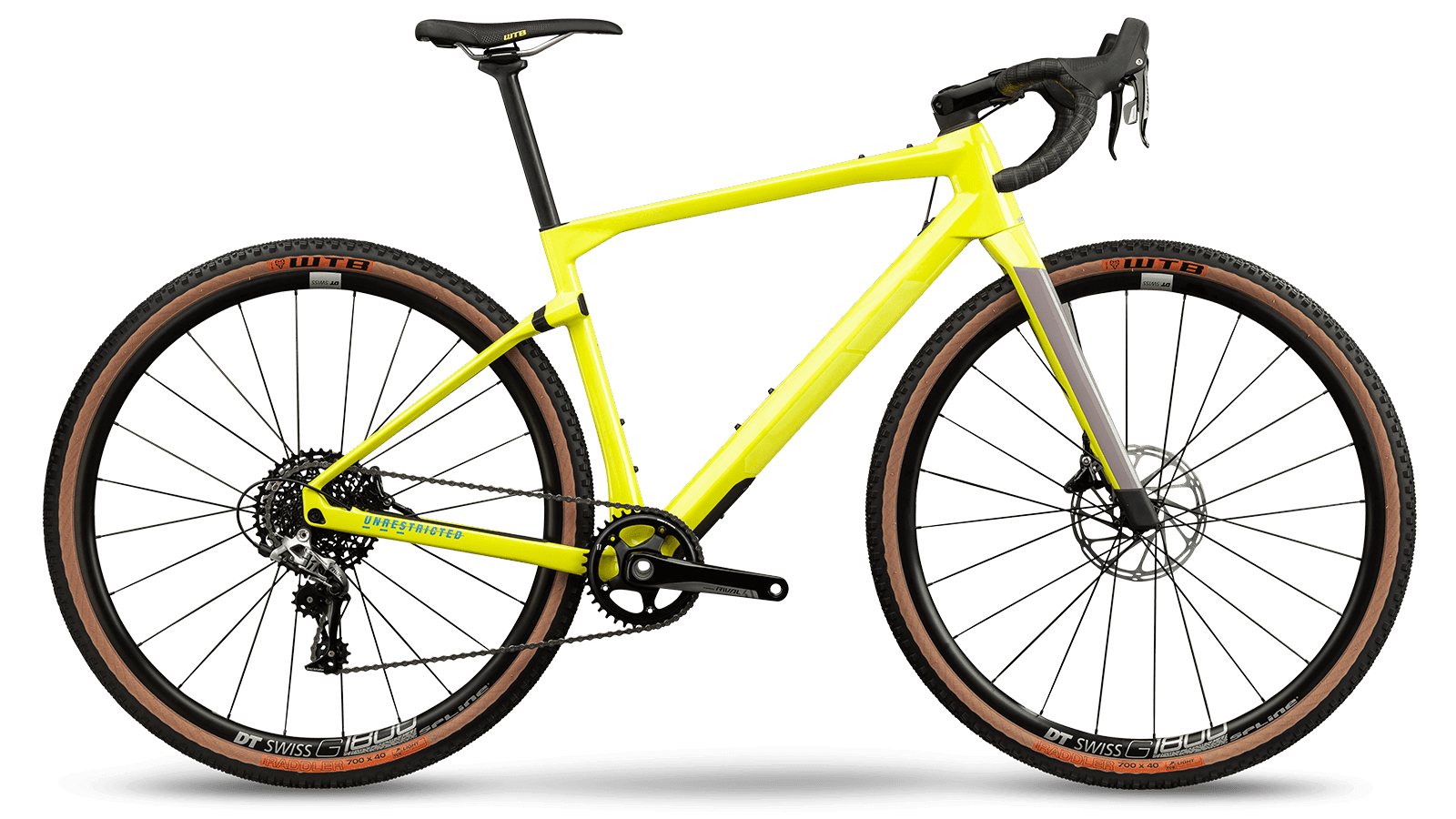
BMC URS LT One
Specifications
Reasons to buy
Reasons to avoid
With the increasing presence of front and rear suspension, BMC took its URS, short for UnReStricted, and made a new LT version. LT stands for 'long travel' and the BMC URS LT is a thoroughly progressive bike that is at the forefront of gravel technology.
BMC is another brand looking beyond simple frame compliance to offer comfort and has brought Micro Travel Technology (MTT) Suspension to the URS from its cross-country mountain biking race frames. It's not just about comfort as BMC claims that the MTT improves traction, ideal for loose surface conditions or climbs. The URS LT not only gets a bump to 20mm of rear suspension but also features a 20mm coil-sprung suspension fork.
BMC has used what it calls Gravel+ geometry, undoubtedly inspired by mountain bike technology, to give the URS a slack 70-degree head angle and long front end creating a bike that offers a composed yet lively ride.
The URS will fit a 700c x 45mm (650b x 47mm) tire and comes specced with tubeless-ready 40mm WTB Raddler tires. Attention to detail is second to none with BMC’s integrated cockpit system, hub dynamo cable routing, integrated protection from rock strikes, and chain slap plus mounts for three bottle cages and a top tube feed bag.
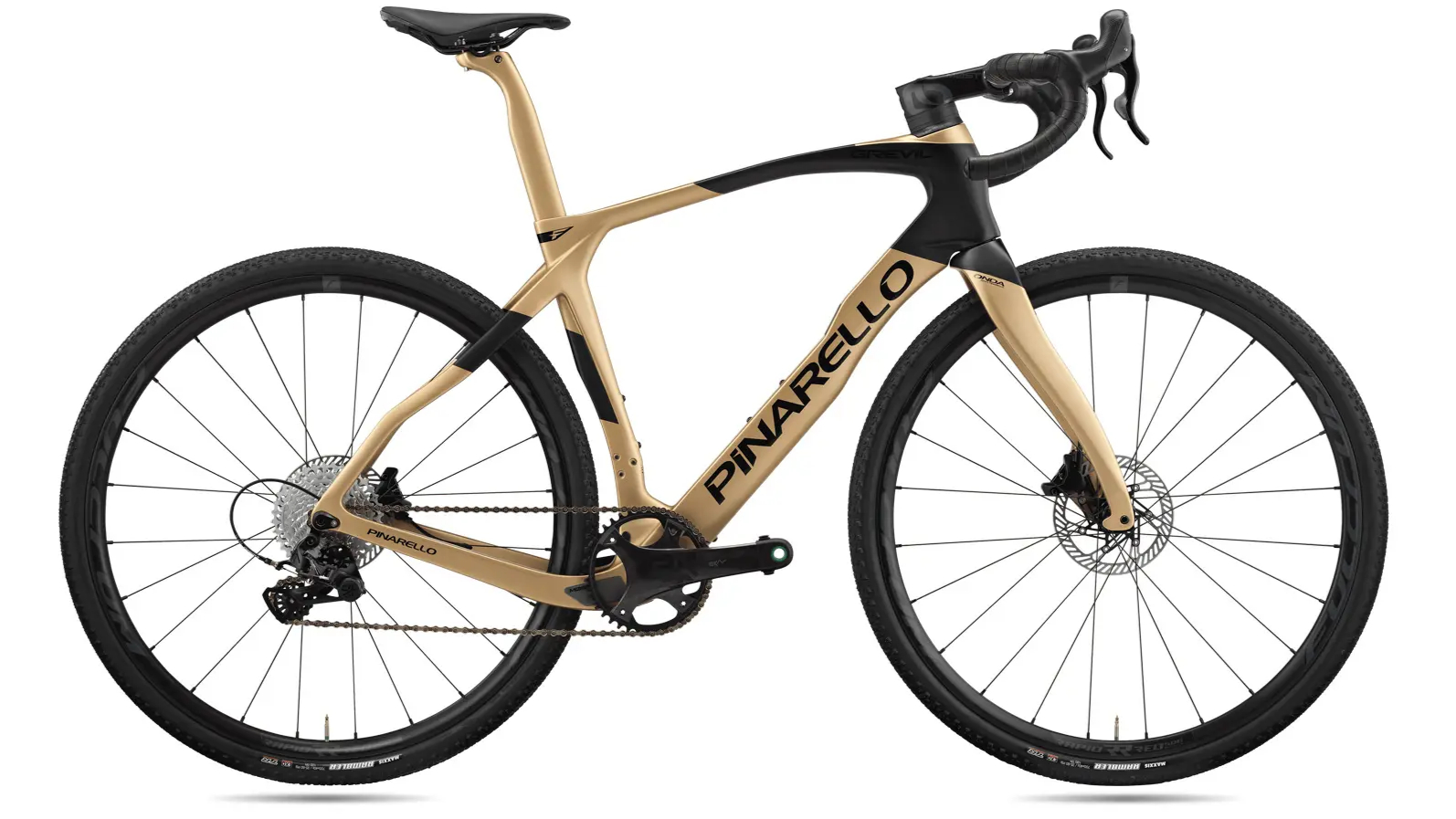
Pinarello Grevil F Ekar
Specifications
Reasons to buy
Reasons to avoid
Pinarello is best known for its fast road bikes and although the Grevil F is designed for off-road riding, it's clear from just looking at the frame that it shares a lot in common with its road-going siblings.
Pinarello's distinctive asymmetric design uses size-specific geometry and is designed to offer stiffness where it's needed to reinforce the asymmetric forces applied to a bike by the drivetrain. The frame also borrows a lot of aerodynamic teaching from the Dogma road bike but has been optimized to offer better performance at slightly slower gravel speeds as well as more compliance. Despite the go-faster shapes of the Grevil F frame, Pinarello has managed to still squeeze in clearance for 50mm (or 27.5 x 2.1in) tires.
The result is a staggeringly fast gravel race bike that's capable enough to tackle a wide range of gravel terrain, yet still comfortable enough to ride all day.
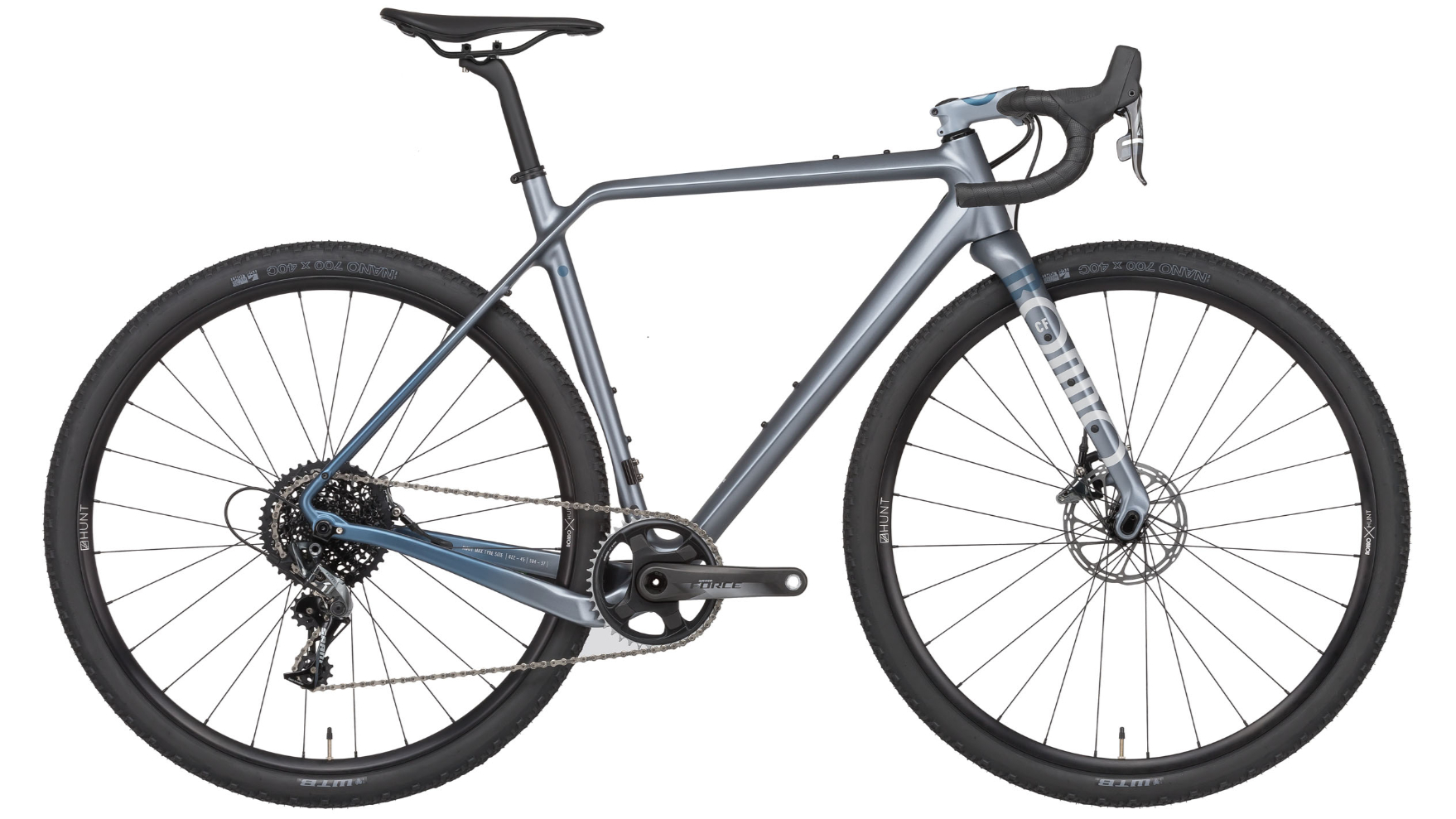
Rondo Ruut CF1
Specifications
Reasons to buy
Reasons to avoid
While many gravel bikes are billed as the convergence of road and off-road, and a platform that offers the ultimate versatility, Rondo takes it one step further by offering two different geometries in one bike with its Vario Geo concept.
This is achieved using a Twintip fork that houses a flip-chip in the dropout that alters the bike's head/seat angle (0.5 degrees), handlebar height (10mm), and fork rake (13mm). The high setting gives the Ruut an agile and aggressive characteristic suited to road riding and everyday gravel, but once flipped into the low position the steering becomes relaxed and steadier for control on rough descents or when loaded with bikepacking bags. This versatility is only enhanced by its ability to fit a chunky 57mm tire when using 650b wheels.
The oddly kinked top tube is more than a design aesthetic and works with the kinked seat stays and scooped-out seat tube to make the Ruut CF1 more compliant when pedaling over rough surfaces.
How to choose the best gravel bike
How much should I spend on a decent gravel bike?
As with any cycling niche, some bikes demand some pretty astronomical price tags. Even gravel bikes that are considered mid-range can still cost upwards of $3,500.
Luckily, there are plenty of really good cheap gravel bikes too. You may not get fancy carbon parts and electronic shifting but they still offer a lot of performance whether you're looking to get into gravel riding or bikepacking.
How much should a gravel bike weigh?
With beefier frames and heftier components, it's no surprise that gravel bikes weigh more than road bikes. Gravel bike weights can range between 8kg to 13kg, but 8 to 10kg is pretty typical for a decent bike. More capable gravel bikes can weigh the same as lightweight hardtail MTBs as they have similar components such as suspension forks and dropper posts.
What is a gravel bike best for?
The obvious answer is that a gravel bike is best at riding on gravel. What's actually considered gravel is vague and can span everything from unpaved roads and well maintained access tracks to rooty woodland singletrack.
This is further muddied by the fact gravel bikes are beginning to split into their own sub categories. Slacker, longer, and lower MB inspired geometry and increasingly larger tires offer more control, grip and comfort on technical terrain.
Before you invest in a gravel bike we recommend having a think about the riding you intend on doing. If you want to race, ride fast, or want a bike that can cross-over onto the road as well then look for a lighter, racier bike. Looking to push the limits of what is possible on a drop bar bike or head out on an adventure then a sturdier, slacker bike will be better suited.
What's the best gravel bike frame geometry?
Taking inspiration from endurance road bikes, gravel has further evolved to suit rougher conditions. Longer wheelbases and slackened head tube angles enhance stability when traveling at speed on harsh terrain, and bottom brackets have gotten lower to improve cornering performance. Some progressive gravel bikes now have geometry figures that could be mistaken for cross-country mountain bikes from five years ago. These bikes excel at rough terrain and singletrack as well as being well suited to multi-day adventure riding.
What should I know about component selection?
For most riders, picking the right bike is about finding a balance between being confident and comfortable on a ride without sacrificing too much speed. Previously gravel bikes borrowed componentry from both road and mountain bikes but as the discipline has become more popular, brands have flooded the market with gravel-specific parts. While some naysayers will scoff at the thought of gravel-specific components as a money grab by the cycling industry, a lot of these components do bring tangible performance. Gravel drivetrains incorporate narrow-wide chainrings and clutched derailleurs to keep the chain on, rims' inner diameter widths are optimized for gravel tires and the best gravel handlebars combine wider width and flare for more control off-road.
With many bikes now available with the option of running a choice of 700c and 650b wheels, finding a balance between a fast bike and a comfortable bike is far less of a compromise.
Which wheel size is best for gravel – 700c or 650b?
The wheel and tire size debate seems to be a common theme in most disciplines of cycling. While some will say that gravel is best-ridden on voluptuous 650b x 50mm+ tires, it can’t be ignored that Unbound Gravel saw a lot of competitors opting for fast-rolling 700c x 35mm. In reality, there is no one wheel size or tire width to suit everything. The best gravel bike tire for you should reflect your terrain, riding style, and bike tire limitations. Luckily most of the best gravel bikes allow the option to run either 700c or 650b, so it is possible to experiment with different setups to see which works best for you.
Larger 700c wheels will generally roll faster on smoother surfaces as well as improve rollover capability thanks to their greater diameter. Smaller 650b wheels have become popular as they can allow a higher volume tire to be fitted beyond a frame's 700c max-width. Increased tire volume, when running lower pressures, allows the tire to absorb bumps better as well as yield more cornering grip thanks to the increased tire footprint. This makes them better suited to very rough terrain and bikes laden with bikepacking bags.
That being said, we are seeing many brands developing frames able to accommodate large volume 700c x 45mm+ tires and phasing out the need for 650b to run big tires.
Does a gravel bike need suspension?
While large-volume tires with low pressures can do a fantastic job of smoothing out rough roads, they come with their disadvantages. Lower pressures can increase rolling resistance on smooth surfaces while also risking tire damage on rough terrain. By introducing suspension systems for gravel bikes, the rider gets the benefit of extra comfort without compromising tire pressures or component choices. Gravel suspension can be categorized into two types, active and passive.
Passive systems rely on built-in frame compliance using slender tube shapes and blends of carbon designed to be flexible. The advantages of a passive system are that it adds very little extra weight and is maintenance-free.
Active suspension takes the form of suspension forks, stems, and seatposts or pivoted flex that uses a damper. These systems will all use a damper and pivot points to absorb impacts and vibrations. Active systems usually offer a more isolating experience as they have more travel and can better manage the direction of absorption.
What pedals are best for a gravel bike?
While you could use any of the three main pedal types – road clipless (SPD SL), MTB clipless (SPD) or flat, we'd recommend using MTB clipless.
Clipless pedals designed for MTB (also often called SPDs – the Shimano brand name for clipless pedals) can be clipped into on either side of the pedal (unlike road pedals) and are designed to still work when clogged with mud and other trail debris. There are loads of options to choose from, check out our guide to the best clipless MTB pedals for more.
How we test gravel bikes
We test these gravel bikes on a range of unpaved roads and tracks, from super smooth to more rocky and rugged, to assess how well they deal with the particular challenges of gravel riding. We also ensure we ride them in various conditions to see how they perform in the worst as well as the best of the weather.
Meet the testers
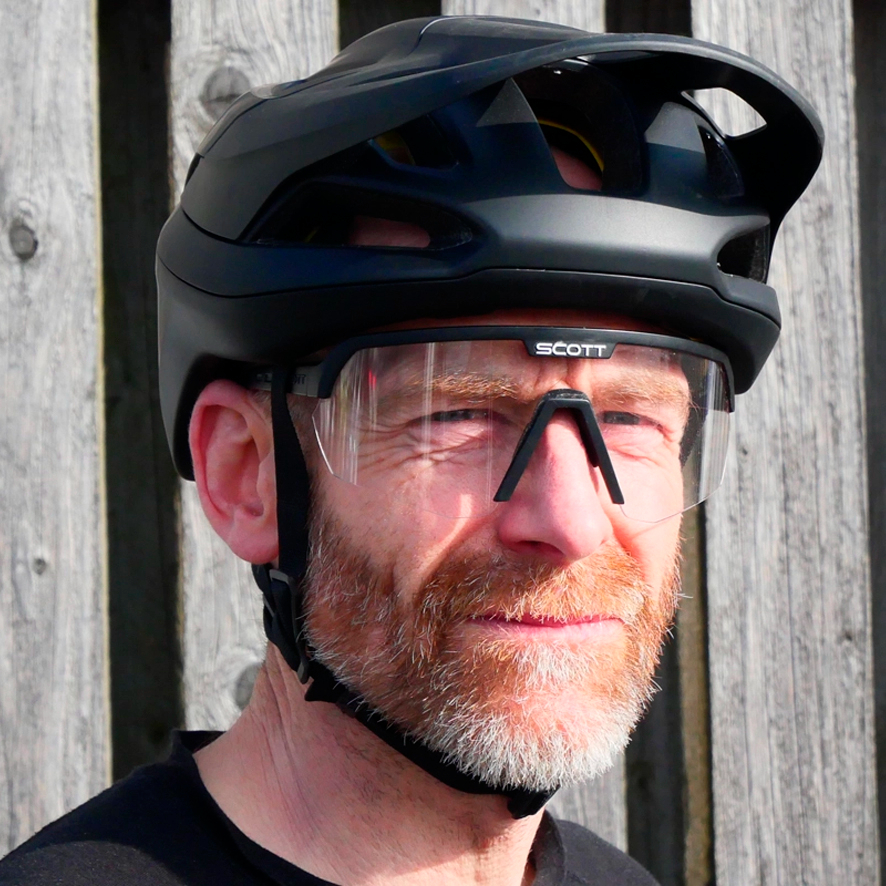
Guy's been riding and writing about off-road bikes for over three decades. He's been riding gravel bikes since their onset so know's what works and what doesn't.
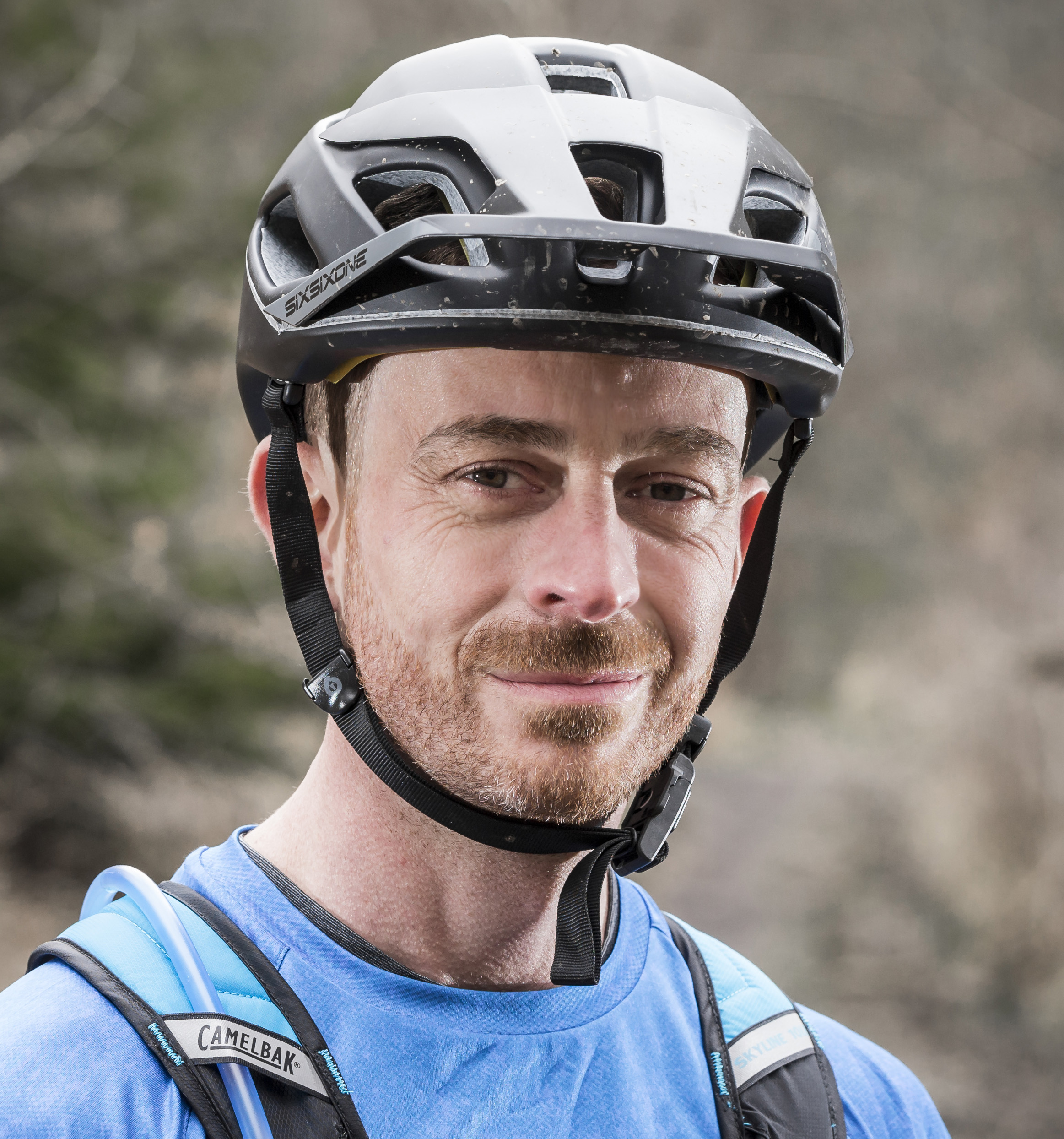
Rich has been riding mountain bikes since the early nineties and testing bikes and kit for over a decade. A jack of many trades, he has competed in cross-country, enduro and long distance MTB races, not to mention also now adding gravel to his riding repertoire.

Graham Cottingham joined the BikePerfect team as our senior tech writer in 2020. With over 20 years of riding experience, he has dabbled in downhill, enduro, and gravel racing. Not afraid of a challenge, Graham has embraced bikepacking over the last few years and likes nothing more than strapping some bags to his bike and covering big miles to explore Scotland's wildernesses. When he isn’t shredding the gnar in the Tweed Valley, sleeping in bushes, or tinkering with bikes, he is writing tech reviews for BikePerfect.
Rides: Cotic SolarisMax, Stooge MK4, 24 Bicycles Le Toy 3, Surly Steamroller
Height: 177cm
Weight: 71kg
- Rich OwenEditor, BikePerfect
- Guy KestevenTechnical-Editor-at-Large
